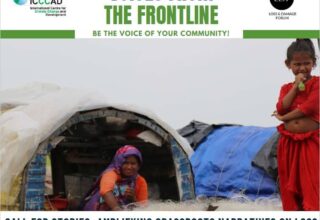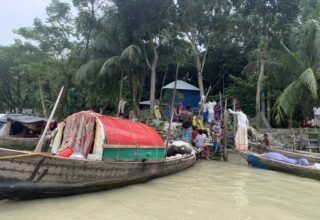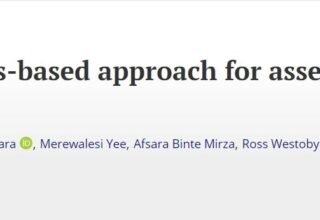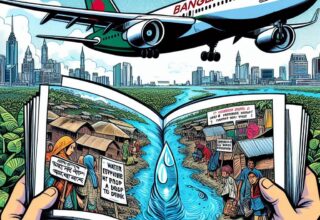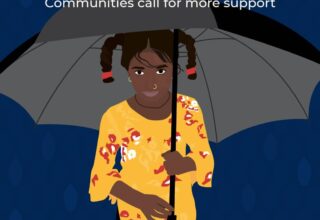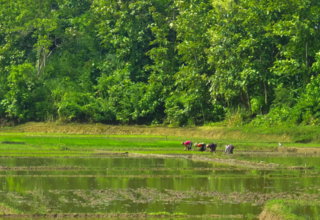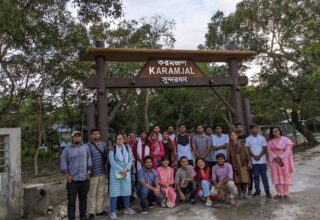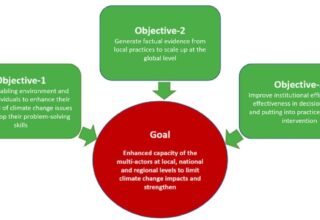Globally, people are disproportionately affected by climate change consistently and are enforced to adapt, with or without external assistance. Nonetheless, the current mitigation and adaptation efforts have been deemed insufficient to resist losses and damages (L&D), particularly in vulnerable countries from the Global South. It is also reported that vulnerable countries have gone beyond their ability to adapt due to frequent and intensified extreme weather events and poor institutional and financing capacity to manage the irreversible risks. In some countries and localities, it is already too late to solve the problem with conventional adaptation interventions (Kumari, 2022).
In the face of accelerating climate change, minimizing impacts through adaptation efforts and addressing loss and damage have become pivotal aspects of the global discourse. As the world grapples with increasingly frequent and severe climate-related events, understanding the intricate relationship between adaptation and loss and damage is crucial. These two concepts, seemingly distinct, are inherently intertwined, in tackling the climate crisis dilemma.
Adaptation: Building Resilience in the Face of Change
Adaptation is the process of adjusting to the changing climate and its impacts, thereby reducing vulnerability and enhancing resilience. It involves implementing measures to safeguard communities, ecosystems, and economies from the adverse effects of climate change. Adaptation initiatives can range from building climate-resilient infrastructure and developing drought-resistant crops to creating early warning systems for extreme weather events. Effective adaptation not only minimizes potential damages but also ensures sustainable development. By adapting to climate change, communities can thrive amidst environmental challenges, preserving their way of life and cultural heritage.
Loss and Damage: Confronting the Irreversible Impacts
Loss and damage, on the other hand, refer to the adverse effects of climate change that cannot be averted through mitigation measures or be minimized through adaptation measures. It encompasses the loss of lives, livelihoods, and cultural heritage due to climate-related events such as hurricanes, floods, and heat waves. Unlike adaptation, which aims to minimize vulnerability, loss and damage focus on addressing the irreparable harm caused by climate change impacts
“In the face of accelerating climate change, minimizing impacts through adaptation efforts and addressing loss and damage have become pivotal aspects”
The Interconnectedness: How Adaptation minimizes Loss and Damage
Climate justice is a key principle that calls for reparations from developed countries who have disproportionately benefited from historical emissions, causing global warming manifesting through losses and damages, which are being borne by the ones who have contributed the least to climate change. Despite facing financial, technical, infrastructural, and resource constraints, the local communities have been adapting to the extreme climatic events in many cases, their anticipatory decisions have reduced the propensity of both economic, and non-economic losses and damages.

In order to ensure that the money is put to effective solutions, it is important to put the local people at the center of all interventions and decision-making processes. Numerous locally tailored adaptation efforts have been proved to be effective and sustainable worldwide, which are not only addressing the immediate losses and damages but also improves resilience in the long run.
The nexus between adaptation and loss and damage lies in the idea that effective adaptation efforts can minimize the extent of future losses and damages, but also help recover from current losses and damages. Communities equipped with adaptive capacities are better prepared to withstand the onset of climate-related disasters. Furthermore, adaptation initiatives can also encompass social safety nets and financial instruments that aid in post-disaster recovery. By strengthening adaptive capacities, societies can reduce their vulnerability, enhancing their ability to bounce back in the face of loss and damage.
Community-led Initiatives in the Coast of Maldives
Small island communities are highly vulnerable to the impacts of climate change, with rising sea levels, intense storms, and coastal erosion threatening their way of life and livelihoods. Kunburudhoo Island in South Ari Atoll in the Maldives is one such community. Despite the challenges posed by climate change and land constraints, the community of Kunburudhoo Island has made efforts to address these losses and damages. One of the most prominent initiatives has been the planting of trees and coastal vegetation to combat beach erosion and protect against the impacts of salinization, led by communities.
Integrating Adaptation and Loss & Damage into Policy and Practice
As we move forward, integrating adaptation and addressing loss and damage must be central to climate policies and practices worldwide. This integration calls for a holistic approach that combines mitigation efforts to reduce emissions, adaptation strategies to enhance resilience, and mechanisms to address loss and damage.
- Enhancing Collaboration and Knowledge Sharing: Foster collaboration between stakeholders involved in L&D, adaptation, and DRR efforts. Establish platforms for knowledge sharing and joint research to identify overlaps and opportunities for synergy. By learning from one another, these fields can strengthen their approaches and improve outcomes.
- Developing Comprehensive Risk Assessments: Integrate climate-related risk and vulnerability assessments that consider both short-term adaptation needs and long-term potential loss and damage. By understanding the interconnectedness of these risks, decision-makers can develop comprehensive strategies that address immediate vulnerabilities while preparing for future challenges.
- Mainstreaming Climate Considerations: Embed climate considerations into development policies and plans. Encourage governments and organizations to mainstream climate change adaptation and disaster risk reduction into their decision-making processes. This integration ensures that climate resilience becomes an integral part of sustainable development initiatives.
- Promoting Nature-Based Solutions: Nature-based solutions, such as reforestation and wetland restoration, offer dual benefits by enhancing ecosystem resilience, which is vital for both adaptation and disaster risk reduction. By investing in these solutions, societies can mitigate climate impacts, reduce disaster risks, and preserve biodiversity.
- Empowering Local Communities: Recognize the invaluable knowledge and expertise of local communities. Engage them actively in adaptation, disaster risk reduction, and L&D initiatives. Local communities possess vital insights into their vulnerabilities and can contribute significantly to the development and implementation of effective strategies
“Adaptation initiatives can also encompass social safety nets and financial instruments that aid in post-disaster recovery”
Women in Action: Addressing Salinity Crisis in South-Western Bangladesh
Slow-onset hazards like salinity intrusion have depleted potable water in Satkhira, Bangladesh. The Golap Mohila Dal (Rose Women Group) in the village, led by women, have consulted with their communities and built their own capacities from WaterAid’s Water Entrepreneurship for Women’s Empowerment (WE-WE) approach, in order to run a reverse osmosis plant. This demonstrates how structural gender inequalities can be overcome through a participatory process of identifying vulnerabilities and potential solutions (GCA, 2022).
“Developing countries, which often bear the brunt of climate impacts despite contributing the least to global emissions, need support to adapt and deal with loss and damage effectively”
A Unified Response for a Resilient Future
Addressing the nexus between adaptation and loss and damage requires global cooperation on the agenda of climate justice. Developing countries, which often bear the brunt of climate impacts despite contributing the least to global emissions, need support to adapt and deal with loss and damage effectively. This support includes financial assistance, technology transfer, and capacity building to bolster their adaptive capabilities.
A unified response, rooted in collaboration, comprehensive risk assessments, mainstreaming climate considerations, nature-based solutions, and empowering local communities, can pave the way for a resilient future. By bridging the conceptual gaps and working together, we can build societies that are not only capable of adapting to change but also capable of thriving in the face of uncertainty, ensuring a sustainable legacy for generations to come. Through collective action, empathy, and innovation, we can navigate the challenges of the climate crisis, ensuring that no one is left behind in the face of its impacts.
Authors: Nusrat Naushin is working as a Programme Co-coordinator-Loss & Damage in ICCCAD.

